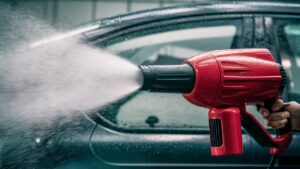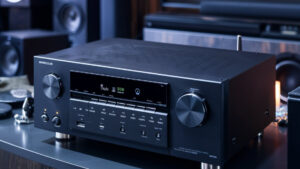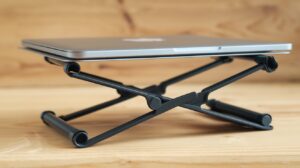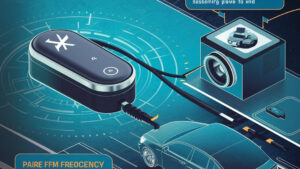To use an electric ratchet, first, select the correct socket size for your task. Then, connect the ratchet to a power source and press the trigger to operate it.
Electric ratchets are essential tools for both professionals and DIY enthusiasts. They provide efficient power for loosening and tightening bolts, making tasks quicker and easier. Unlike manual ratchets, electric models reduce fatigue and speed up the workflow, especially in tight spaces.
Understanding how to properly use an electric ratchet can enhance your productivity and improve the quality of your work. This guide will walk you through the steps to maximize its effectiveness, ensuring safe operation and optimal performance. Whether you’re tackling automotive repairs or home projects, mastering this tool can save you time and effort.
Choosing The Right Electric Ratchet
Selecting the right electric ratchet is crucial for efficiency. A good tool can simplify tasks and save time. Different jobs require different features. Let’s explore how to choose the best electric ratchet for your needs.
Consider The Type Of Work
Understanding your specific tasks is vital. Different jobs demand different tools. Here are some common uses:
- Automotive Repairs: Requires high torque and speed.
- Construction: Needs durability and power.
- General Maintenance: Look for versatility and ease of use.
Match the ratchet to your tasks. Consider the following:
- What kind of projects do you do?
- How often will you use it?
- Do you need portability?
Look For Key Features
Key features enhance usability and performance. Pay attention to these aspects:
| Feature | Importance |
|---|---|
| Torque Rating | Higher torque handles tougher jobs. |
| Battery Life | Longer battery lasts through projects. |
| Weight | Lighter models reduce fatigue. |
| Speed Settings | Multiple speeds enhance control. |
| Ergonomic Design | Comfortable grip helps during prolonged use. |
Evaluate these features before making a decision. A good electric ratchet can make work easier. Choose wisely to maximize your efficiency.
Safety Precautions
Using an electric ratchet can be safe and efficient. Follow these safety precautions to protect yourself and others. Always prioritize safety while working with tools. Here are essential guidelines to keep in mind.
Wear Appropriate Protective Gear
Wearing the right protective gear is crucial. It helps prevent injuries. Use the following items:
- Safety glasses: Protect your eyes from debris.
- Gloves: Keep your hands safe from cuts.
- Ear protection: Reduce noise exposure from the tool.
- Steel-toed boots: Protect your feet from heavy items.
Choose gear that fits well. Check for damage before use. Replace any worn-out equipment immediately. Always keep your gear clean and functional.
Ensure The Tool Is In Good Condition
Regular maintenance is important for safety. Inspect the electric ratchet before each use. Follow these steps:
- Check the power cord for frays or damage.
- Examine the trigger for proper function.
- Ensure the socket and ratchet head are intact.
- Look for any unusual noises during operation.
Keep the tool clean and free from debris. Store it in a dry place. Follow the manufacturer’s instructions for maintenance. Never use a damaged tool. Always prioritize safety in your workspace.
Preparing For Use
Before you start using your electric ratchet, preparation is key. Proper preparation ensures safety and efficiency during your tasks. Follow these steps to get ready:
Charge The Battery
Ensure your electric ratchet is fully charged before use. A charged battery enhances performance and reduces interruptions.
- Check the battery level indicator.
- Connect the charger to a power source.
- Allow the battery to charge for the recommended time.
Most batteries take about 1-2 hours to charge. Always refer to the user manual for specific charging instructions.
Select The Correct Socket Size
Choosing the right socket size is crucial. Using the wrong size can strip bolts or damage the tool.
- Identify the size of the nut or bolt.
- Refer to your socket set for matching sizes.
- Attach the correct socket to the ratchet.
Here’s a quick reference table:
| Nut/Bolt Size | Recommended Socket Size |
|---|---|
| 1/4 inch | 1/4 inch socket |
| 3/8 inch | 3/8 inch socket |
| 1/2 inch | 1/2 inch socket |
Using the right socket ensures a secure fit. This prevents slipping and enhances efficiency.
Operating The Electric Ratchet
Using an electric ratchet is simple and efficient. Proper operation ensures great performance and safety. Master these essential steps for the best results.
Hold The Tool Correctly
Proper grip is crucial for effective use. Follow these steps:
- Use your dominant hand to hold the handle.
- Wrap your fingers around the handle for stability.
- Place your thumb on the control switch for easy access.
Keep your other hand steady on the workpiece. This helps in maintaining control. Avoid gripping too tightly. Relax your hand for better maneuverability.
Adjust The Torque Settings
Setting the correct torque is vital. This prevents damage to fasteners. Here’s how to adjust it:
- Locate the torque adjustment dial on the tool.
- Turn the dial to your desired torque level.
- Refer to the fastener specifications for guidance.
Use the following table for common torque settings:
| Fastener Size | Recommended Torque (ft-lbs) |
|---|---|
| 1/4 inch | 5-10 |
| 3/8 inch | 10-20 |
| 1/2 inch | 20-30 |
Always double-check settings before use. Proper torque helps in avoiding stripped bolts.
Using The Electric Ratchet Safely
Safety is vital when using an electric ratchet. Knowing the right practices protects you and enhances your work efficiency. Follow these tips for safe operation.
Avoid Applying Excess Force
Applying too much force can damage your tools and fasteners. Here are some tips:
- Use the tool’s torque settings. They prevent over-tightening.
- Listen for strange noises. Stop if you hear grinding sounds.
- Check for resistance. If you feel too much, stop and reassess.
Maintaining a steady grip helps. Use both hands for stability. Trust the tool’s power.
Be Mindful Of Your Surroundings
Your workspace matters. Keep these points in mind:
- Clear the area of obstacles.
- Ensure there is good lighting.
- Avoid using the tool near water.
- Keep bystanders at a safe distance.
Inspect your surroundings before starting. A clutter-free area reduces accidents. Stay aware of other tools and equipment nearby.
Maintenance And Storage
Proper maintenance and storage keep your electric ratchet in top shape. Regular care ensures longevity and optimal performance. Follow these tips for best results.
Clean The Tool Regularly
Cleaning your electric ratchet is essential for smooth operation. Dust and grime can affect its performance. Here are steps to clean your tool:
- Unplug the tool: Always ensure it is powered off.
- Use a soft cloth: Wipe the exterior to remove dirt.
- Inspect the gears: Check for debris and clean gently.
- Apply lubricant: Use appropriate oil for moving parts.
Regular cleaning extends the life of your electric ratchet. Aim to clean it after every use or at least once a week.
Store In A Dry And Secure Place
Proper storage protects your electric ratchet from damage. Here are tips for safe storage:
- Choose a dry area: Moisture can cause rust.
- Use a toolbox: Store it in a dedicated space.
- Keep it away from heat: High temperatures can harm components.
- Secure it: Ensure the tool is safe from drops or knocks.
Follow these storage tips for best results. Taking care of your electric ratchet leads to reliable performance.
Frequently Asked Questions
How Does An Electric Ratchet Work?
An electric ratchet uses a motor to turn sockets quickly. It automates the process of loosening and tightening bolts. This feature saves time and reduces manual effort. Most models have adjustable torque settings for versatility. Always ensure the tool is compatible with your sockets for optimal performance.
What Are The Benefits Of Using An Electric Ratchet?
Using an electric ratchet offers multiple advantages. It significantly speeds up tasks compared to manual ratchets. The reduced physical strain makes it ideal for extended use. Electric ratchets also provide consistent torque, minimizing the risk of overtightening. This tool is perfect for both professionals and DIY enthusiasts.
Can I Use An Electric Ratchet For All Jobs?
While versatile, electric ratchets aren’t suitable for every job. They excel in repetitive tasks or tight spaces. However, heavy-duty applications may require a more robust tool. Always consider the specifications of your electric ratchet. Ensure it’s appropriate for the materials and sizes you are working with.
How To Maintain An Electric Ratchet?
Maintaining an electric ratchet is crucial for longevity. Regularly clean the tool to remove debris and grime. Check for any wear on the battery and sockets. Store it in a dry place to prevent rust. Following these steps will ensure your ratchet performs optimally for years.
Conclusion
Using an electric ratchet can greatly enhance your efficiency and precision in various tasks. With proper technique and safety measures, you can achieve impressive results. Always choose the right settings for your project. Embrace this tool, and watch your productivity soar.
Happy ratcheting!








